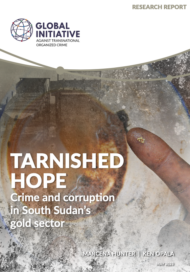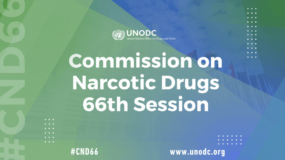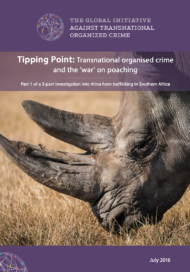Posted on 28 Aug 2016
With the surge in migration to Europe, public debate has focused on how Europe perceives migration and what it will do to stem the flow. However, reliable information about the mass movement of migrants and refugees is insufficient, especially when it comes to established migratory routes, the drivers of migration, and African perspectives on migration. A new evidence base is needed to ensure that policy responses are informed, proactive and effective.
This seminar, co-hosted by the Institute for Security Studies and the Global Initiative against Transnational Organised Crime in Pretoria, South Africa on 30 August 2016, explored migration policy from an African point of view. It unpacked the findings of cutting edge research across the continent based on interviews with migrants and smugglers.
Peter Tinti of the Global Initiative focused on the migrant smuggling networks that are facilitating migrant flows within and out of Africa. In his presentation he gave an overview of how these networks tend to be structured and how they function, but more specifically, offered some insight regarding how policies that have been pursued by European and African governments have created an environment that has accelerated the development of a robust and expanding migrant industry.
There is a difference between “migrant smuggling” (“the procurement in order to obtain directly or indirectly a financial or other material benefit of the illegal entry of a person into a state party of which the person is not a national or a permanent resident”, according to the UNODC) and “human trafficking” (the recruitment, transportation, transfer, harboring or receipt of a person by means that use coercion).
A smuggler, then, is anyone who helps a migrant overcome a boundary or barrier to enter a country through illegal or irregular channels. This means that in general, the migrant-smuggler relationship is almost always governed by the laws of supply and demand. What creates the market are not the smugglers but the migrant demand in smuggling. We have learnt that as these boundaries change and shift, smuggling operations change accordingly. In short: when boundaries increase, so does the need to find and hire a smuggler, and thus, so does the smuggling market.
Challenges
The challenge for policymakers in developing responses to migrant smuggling networks is to understand each route, hub, and flow as its own market, each of which requires policy response tailored to each specific market. Most importantly: No one policy is going to be a panacea.
What should be kept in mind when creating responses to migrant smuggling is the following:
- Adhere to the prinicple of “do no harm”.
- Create clarity about what is the problem we are trying to address.
- Rethink policies towards protracted displacement regimes.
- Understand the “smuggling market” better.
Speakers:
- Ottilia Anna Maunganidze, Acting Head, Migration Programme, ISS (chair)
- Sarah Pugh, Programme Officer, Scalabrini Centre
- Bram Frouws, Coordinator, Regional Mixed Migration Secretariat
- Peter Tinti, Senior Research Fellow, Global Initiative against Transnational Organised Crime
For more information please contact Tuesday Reitano of the Global Initiastive Secretariat:



